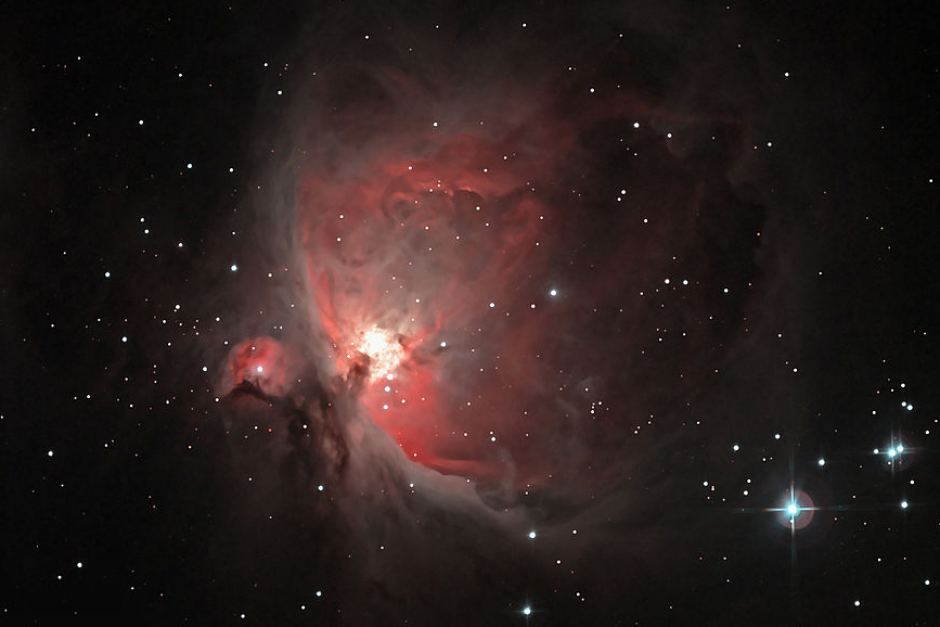
The Orion Nebula
With the recent spell of cold clear nights we have set up the telescope again. Aboriginal Australians were arguably the world’s first astronomers and their complex knowledge, observations and beliefs about the heavenly bodies have become an integral part of their culture as it has been passed down for over 40,000 years. It predates the Babylonians, who developed a zodiac in 2,000 BC, the ancient Greeks, Chinese, Indians and Incas.
The Aborigines’ beliefs about the stars were part of a social and value system that accounted for the daily risings of the sun and moon and the passage of the constellations and planets across the night sky. They were not interested in mathematical positioning of the stars but incorporated all natural phenomena into their traditional rituals and everything is interconnected with the Dreaming, an ever-present reality of how the world was created.
Understanding the sky was conceptual and as such tribal elders passed down knowledge to initiates who were deemed ready to receive it. Some stories were the exclusive secret of men and others, notably those about Pleiades, were the preserve of women. Besides the gender divisions different groups had different stories so coastal tribes have more stories relating to fishing, canoes and storms than inland groups.
The Aborigines’ knowledge of the southern sky was extraordinary for people dependent on naked eye astronomy and they made accurate observations of even inconspicuous fourth order stars. They devised and memorised a complex seasonal calendar based on pattern recognition of the stars. Rather than the Greek ‘join the dot’ pictorial images the Aborigines identified a whole cast of characters in their stories. The Aranda people of Central Australia distinguished star colours (red, blue, yellow and white) and in Eastern NSW the red star, Aldebaran, commemorates the story of a man who stole another man’s wife and hid in a tree. The angry husband set fire to the tree and the flames carried the adulterer into the sky where he still burns red.
They noted the correlation between the passage of star patterns with the seasonal supply of food and as a reminder of the moral lessons told in their myths. They typically see the sun as female and the moon as male, which is different to the Greeks and American Indians. She wakes in the east and lights a bark torch that she carries across the sky to the west and spills ochre and red powder as she sets.
The Milky Way is seen as the great sky river in which the bright stars are fish, the smaller stars are lily bulbs and the Coal Sack is a large plum tree or lily pads. The Southern Cross is variously seen as a stingray being pursued by a shark, two brothers at two campfires cooking a giant fish or the footprint of a giant wedge-tailed eagle. Interestingly the Greek and Aboriginal legends about Orion and the Pleiades are very similar with the former seen as a hunter or rapist and the latter as seven sisters or girls fleeing from the unwanted advances.
Comets were seen as sky canoes carrying the spirits of the dead to their permanent homes or the gleaming eyes of the spirit men searching for victims to kill and suck blood from. Meteors are often seen as flaming spears thrown across the sky by the ancestral beings.
So the Aboriginal Australians were concerned with observing the patterns of stars and integrating the stories into their daily life and rich culture. How sad that so much of their 40,000 years of culture has been destroyed or taken away from them.

